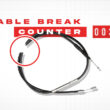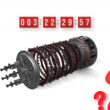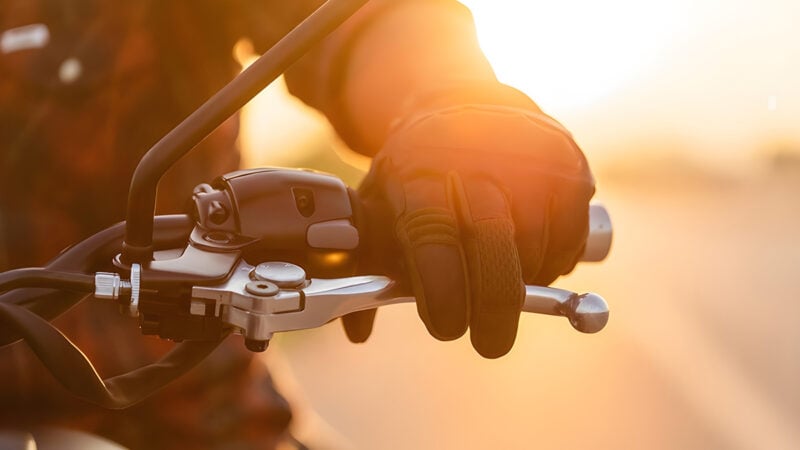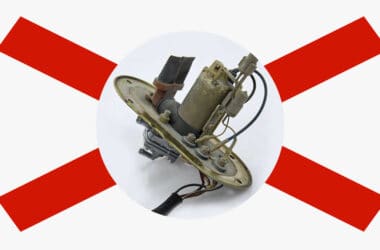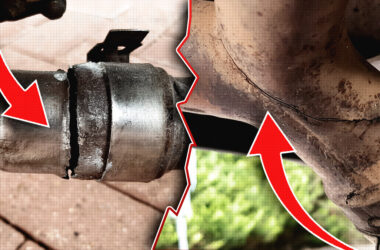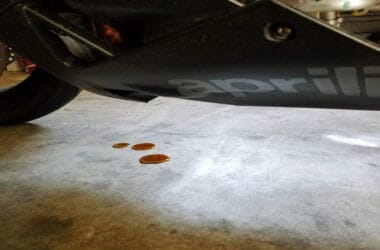Motorcycle clutch not engaging can create multiple problems ranging from harsh gearshift or damage to parts of the clutch assembly, but most importantly the quality of riding the motorcycle will get worse if the clutch is not fixed.
A motorcycle clutch not engaging can cause the motorcycle to stay still or lose power (slipping) due to the clutch not engaging with transmission resulting in a power cutoff to the rear wheel.
In this article, we will explore the reasons behind motorcycle clutch not engaging fully, some symptoms you should watch out for, and how to fix this problem to get you back on the road as you should along with really helpful prevention tips.
But first, you should understand what it means when a clutch is not engaging.
Table of Contents
What It Means When A Motorcycle Clutch Not Engaging
The motorcycle clutch not engaging means that the clutch is not connecting/engaging with the transmission due to friction plates and steel plates not coming in close to each other (leaving a small gap/ clutch slipping) to transfer power.
This results in the power getting cut off to the rear wheel, losing power, or stalling.
Common Reasons for a Motorcycle Clutch Not Engaging
When your motorcycle’s clutch fails to engage properly, it can cause damage to the parts of the clutch assembly when you try to shift/change gears.
Here are some common reasons behind motorcycle clutch is not engaging and how to fix each one of those effectively.
1. Worn Friction Plates & Steel Plates
Motorcycle clutch friction plates and steel plates together are called a clutch pack, and when the clutch is engaged they come in close together to rotate the clutch basket and inner hub simultaneously to engage the transmission and transfer the generated power to the rear wheel to get the motorcycle running/moving.
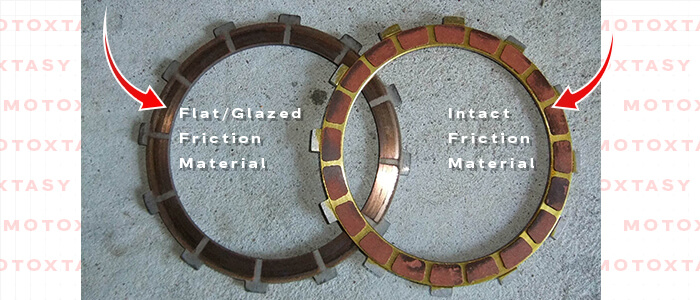
Wear and tear to the friction plates and steel plates could include glazed-over friction material of the friction plates or bluing/bending of steel plates. The friction material is usually made up of organic materials rubber impregnated cork, phenolic resin, or compounded rubber.
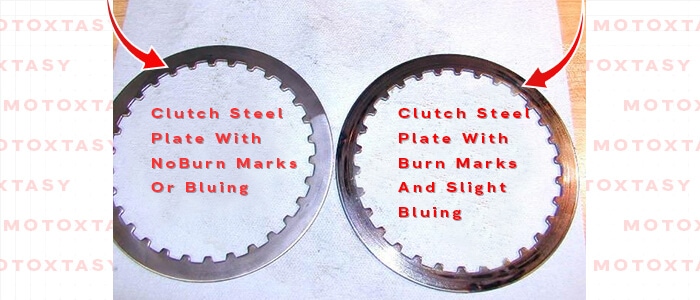
Other friction material types include kevlar and straight-up metal compounds.
When the friction material becomes glazed or wears down to a certain point, and if the steel plates sustain damage like bending, the friction plate and steel plate will not engage or grip each other leaving a small gap between these plates.
Also, watch out for any chipping of the outer circumference and inner circumference teeth of friction and steel plates of the clutch pack or warping/bending of the steel plates.
How To Fix: If your motorcycle clutch pack which includes friction plates and steel plate have signs of significant wear such as warping, bending, or glazed-over friction material then you will need to replace it.
First start by draining the engine oil from your motorcycle. Then remove the clutch cover. Take out the old plates steel and friction plates that have been damaged and replace them with new ones.
Finally, reassemble the clutch and add fresh engine oil. This will significantly improve the clutch engagement of your motorcycle.
2. Clutch Cable Being Too Tight

The clutch cable being too tight will cause the clutch lever to not completely extend resulting in the motorcycle clutch not engaging fully.
A misadjusted clutch cable will cause issues with the functioning of the clutch plates for sure.
There will be a small gap between the clutch plates and this will cause your motorcycle clutch to slip and not deliver the much-needed power and torque to the wheels.
A damaged or misadjusted clutch cable can prevent proper engagement. And also it can make a clutch harder to pull.
How To Fix: Here’s how to fix a tight clutch cable step by step which will allow your motorcycle’s clutch to fully engage.
- Locate the clutch cable adjustment points on your motorcycle. They’re usually near the clutch lever and at the other end where the cable connects to the engine case.
- Turn the adjustment screw near the clutch lever in a counterclockwise direction to increase the cable’s slack which removes the tightness from the cable. Make sure not to overdo it.
- Once you have adjusted the cable slack at a desired point, then adjust your clutch lever to have a little bit of play before you feel resistance.
3. Wrong Free play Of Clutch Lever
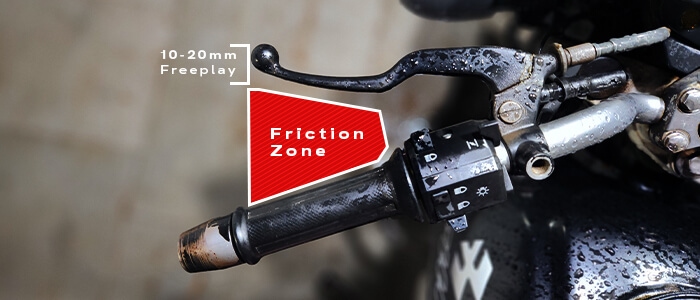
The wrong amount of clutch lever free play will cause the motorcycle clutch to not engage even when you fully release the lever.
Not adjusting your motorcycle’s cable tension and clutch lever free play at least once a year will cause an improper adjustment in the functioning of the clutch pack, resulting in significant damage to the clutch assembly parts due to increased friction during gearshifts.
How To Fix: To fix this problem adjust the free play of the clutch lever between the range of 10-20mm (1-2cm) for OEM clutch levers.
For Aftermarket clutch levers, which are often shorter in length are advised to have a 2-4mm perch gap at the start of the lever.
4. Pressure Plate Lost Tension
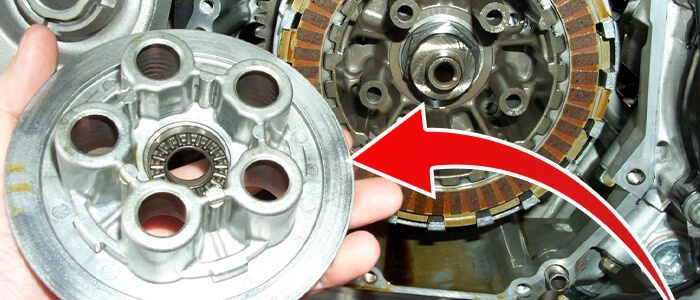
The pressure plate of the clutch losing tension can certainly cause the motorcycle’s clutch to not engage fully.
Pressure plate goes on top of the clutch pack and regulates pressure by compressing and expanding clutch plates with the help of clutch springs when you pull or release the clutch lever.
How To Fix: Pressure plate are held onto their place by using clutch bolts. Check for any loose clutch bolts, signs of corrosion build-up, or blunt threads on bolts and replace them if needed for the pressure plate to be secure tightly in its place.
5. Faulty Clutch Springs
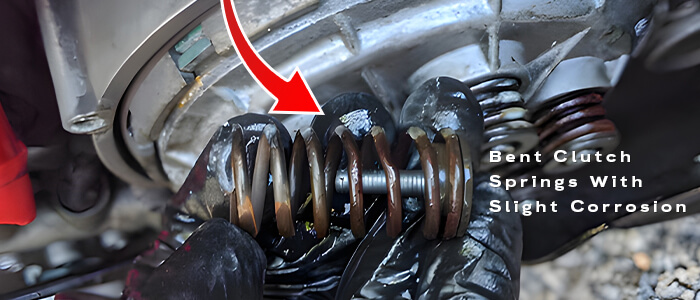
Faulty clutch springs may have signs of severe corrosion or wrapping/bending which will cause the wrong movement of the clutch plates inside the clutch basket and on the inner hub.
You will have harsh/clunky gearshifts which can cause a lot of friction inside the moving parts of the clutch assembly.
How To Fix: If there is a sign of wear on clutch springs such as a bend, or corrosion then it’s better to replace them to avoid further complications. A slight layer of corrosion can be removed with cleaning solvents like WD-40.
6. Damaged Clutch Basket Fingers
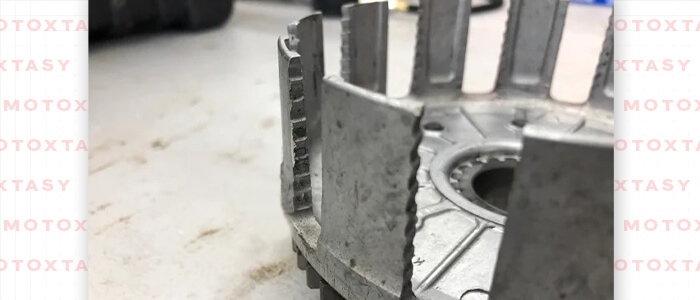
Signs of damage to the clutch basket fingers will include groove/notch marks, chipping, or cracks.
These grooves/notches on the basket fingers will stop the free movement of clutch plates and may cause the plates to get stuck in those grooves resulting in some serious damage to the whole clutch pack.
How To Fix: If the grooves are not deep and don’t cause any kind of obstruction to the movement of clutch plates, then you get it filed by a metal file to smooth and even out those grooves to avoid further damage in the future.
And if the grooves are severely deep and you can feel it by running your finger on them, then replacing the clutch basket is a better and safer choice.
The same goes for chipping or cracks in the clutch basket.
7. Worn/Damaged Clutch Inner Hub
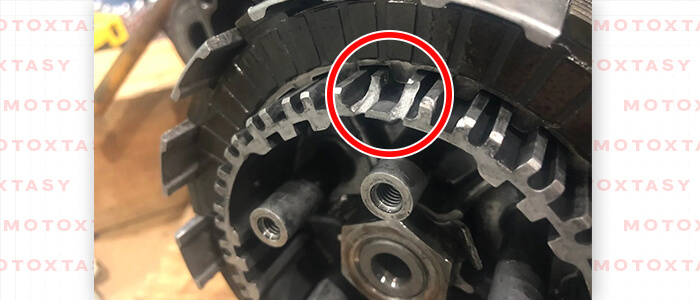
The inner hub of the clutch holds the steel plates of the clutch pack and rotates independently while the clutch is disengaged. But once you release the clutch lever, the steel plates and friction plates come together and rotate the clutch basket and inner hub simultaneously to transfer power to the transmission and then onto the rear wheel.
Wrapping or bending of the clutch plates and harsh gearshifts will cause the teeth of the steel plates to clash against the splines/teeth of the inner hub, resulting in deeper grooves or in some cases chipping or breakage inner hub’s teeth.
This will cause the clutch plates to get stuck and the motorcycle clutch to not engage.
How To Fix: If your motorcycle’s clutch inner hub has developed deeper grooves or has chipping on the edge of its teeth/splines then it is a wiser choice to replace it with a new one.
As the clutch inner hub is a vital part of the clutch assembly, we don’t to take any risk riding a motorcycle with a damaged/worn inner hub.
8. Air In the Hydraulic Clutch System

For motorcycles with a hydraulic actuated clutch system, the whole clutch line needs to be bled first before installing it.
Bleeding the hydraulic clutch system is a process of removing all air and fluid from the clutch system before topping it up with fresh clutch fluid.
Over time air bubbles can be formed in the hydraulic clutch system which can make the clutch feel spongy and in some cases, the clutch does not engage when you release the lever.
How To Fix: To remove the air in the hydraulic clutch system, you will have to bleed the clutch first and then top up the master cylinder with a fresh brake/clutch fluid.
9. Low Level Of Clutch Fluid
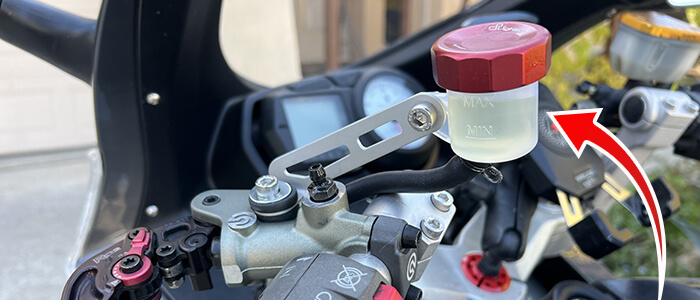
The hydraulic clutch actuated system in a motorcycle requires a sufficient/required amount of clutch fluid to keep the motorcycle’s clutch in proper working condition.
The motorcycle’s clutch will not engage due to the low level of clutch fluid, and riding on low clutch fluid will cause excessive friction between the friction plates and steel plates.
How To Fix: It is advised to top up your motorcycle’s clutch fluid every two years, but you can do a maintenance check every year and refill the master cylinder with fresh clutch fluid if necessary.
10. Seal Leak of Master Or Slave Cylinder
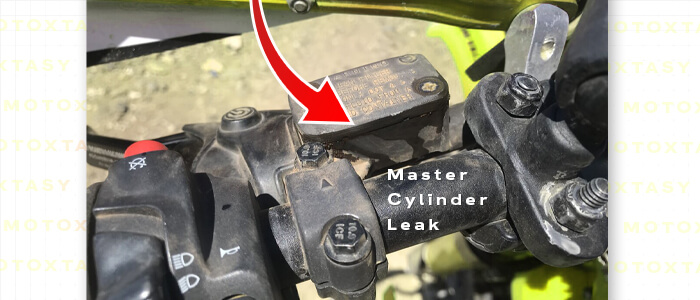
Seals of the master or slave cylinder can get worn over time and if any one of those two cylinders shows a sign of leak, then it will cause a serious problem for your motorcycle.
Seal leaks can introduce air into the clutch system and of course, the existing clutch fluid will leak out of the clutch reservoir.
How To Fix: If you find a sealant leak of a master or slave cylinder in your motorcycle then you should replace those seals as soon as possible.
Motorcycle Clutch Not Engaging Fully Symptoms
Recognizing the symptoms of a clutch not engaging will avoid further complications and potential clutch damage, so here are the most common symptoms of clutch not engaging.
- Slipping Clutch: The most obvious sign is when the clutch slips, causing a loss of power when you accelerate. The motorcycle will stall or the motorcycle goes into gear but won’t move at all.
- Difficulty Shifting Gears: Clunky and harsh gearshift can be felt if the clutch is not engaged fully. Changing gears should be a seamless process, and any unnatural resistance during shifting gears should be inspected thoroughly.
- Unusual Noises: You might hear grinding or squealing sounds when engaging the clutch. These noises are typically a sign of mechanical wear and should not be ignored.
DIY Fixes For A Motorcycle Clutch Not Engaging
You can try some DIY fixes at home to get your motorcycle’s clutch to engage properly. These inspections and fixes are easy to execute and do not require a lot of expertise.
- Adjust Clutch Cable: Ensure the clutch cable is properly adjusted to provide the right amount of tension. An improperly adjusted cable can lead to clutch slippage or difficulty disengaging the clutch.
- Check Hydraulic Fluid: Once every year or two years, you should inspect the clutch fluid of your hydraulic clutch-actuated motorcycles. Replace the clutch fluid if it has gotten dark or top it up if needed. Follow the manufacturer’s guidelines for fluid types and levels for your specific motorcycle.
- Inspect Clutch Plates: Examine the clutch plates for wear such as glazing/thinning of friction material or chipping of clutch plates teeth. Replace them if you find these signs of damage.
- Clean Clutch Basket: Remove any debris or dirt from the clutch basket can improve clutch engagement. A clean and well-lubricated clutch basket allows the plates to engage properly.
- Bleed Hydraulic System: If air is present in the hydraulic system, bleed it to remove air bubbles. Properly bleeding the system ensures that the clutch lever has a consistent and firm feel.
If your motorcycle clutch is not disengaging, then please check out this article. ( The problem areas are pretty much similar to clutch not engaging but the approach is a little different in terms of adjust the clutch setup )
Remember that while these DIY fixes may solve some clutch issues, more complex problems may require professional assistance.
When To Seek Professional Mechanics Help
There are instances where a clutch not engaging may be a sign of a more significant problem. You can seek professional help if your DIY fixes do not resolve the problem.
Severe signs of damage such as cracking, chipping, or grooves on the clutch basket fingers or inner hub will require a professional mechanic’s help as it requires disassembling and assembling multiple parts of the clutch.
And for an average person, it can get pretty difficult. A qualified motorcycle mechanic can diagnose the problem accurately and provide the necessary repairs to fix your motorcycle clutch.
Prevention Tips For Motorcycle Clutch Not Engaging
To prevent clutch engagement issues in the future, you should lubricate your cable-actuated clutch once every year. Topping up the hydraulic clutch fluid once every two years is a best practice.
Changing your engine oil regularly is important for well-lubricated and smooth-performing clutch assembly.
Adjust clutch cable tension and clutch lever free play when it’s needed. Finally, use high-quality lubricants and parts during the replacement for a smooth functioning clutch.
Conclusion
A properly functioning clutch is essential for a smooth and safe motorcycle ride. Understanding the reasons, symptoms, and DIY fixes for a clutch not engaging can help you maintain your bike’s performance. Remember to seek professional assistance when necessary to ensure your motorcycle’s clutch operates optimally.
FAQs
Motorcycle clutch not engaging after replacement?
If your motorcycle clutch is not engaging after replacement, then it means that the clutch assembly parts are incorrectly installed or adjusted. Wrong adjustment of the cable can also cause the clutch to engage.
Can I ride my motorcycle with a clutch that’s not engaging?
It’s not recommended. Riding with a malfunctioning clutch can be unsafe and potentially damage your motorcycle further. Seek repairs before riding.
How often should I replace clutch plates?
The frequency of clutch plate replacement depends on your riding style and the quality of the components. Generally, it’s recommended to inspect them during regular maintenance and replace them when signs of wear are visible.
Is it expensive to repair a clutch that’s not engaging?
The cost of repairing a clutch varies depending on the extent of the damage and the make and model of your motorcycle. Simple adjustments may be affordable while replacing major components can be more expensive.
How can I avoid clutch problems in the future?
Regular maintenance, proper adjustment, and gentle clutch operation can help extend the life of your motorcycle’s clutch and reduce the likelihood of problems.


